The ARC Linkage Project investigating 3D printing for accessibility for people who are blind or have low vision was officially completed in October 2022. This page will continue to be updated on an irregular basis with continuing related work.
Progress made
July 2023
Promotion: Leona Holloway spoke about tactile graphics, 3D printing and the ARC Linkage project on Blind Citizens Australia’s radio program and podcast. The episode is available at https://new-horizons.pinecast.co/episode/3aefee27/episode-818-representing-graphical-information-for-blind-and-vision-impaired-people
Collaboration: Matt Gesualdi from Tact-Ed was our guest speaker at the ANZAGG 3D meeting. He shared his work creating 3D printed models and conveying scale to touch readers.
Research: Samuel Reinders presented his work on Designing Conversational Multimodal 3D Printed Models with People who are Blind at the Designing Interactive Systems (DIS) Conference in Pittsburgh, USA.

June 2023
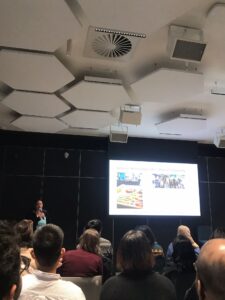 Events: Leona Holloway and Ruth Nagassa shared their CHI papers on 3D printed tactile icons and multi-level building plans at CHI Melbourne on 1 June.
Events: Leona Holloway and Ruth Nagassa shared their CHI papers on 3D printed tactile icons and multi-level building plans at CHI Melbourne on 1 June.
Collaboration: Ruth Nagassa was the guest speaker at the ANZAGG 3D Printing meeting. She shared a range of different methods for adding audio labels to complex 3D printed models. We were also excited to hear that the NSW Department of Education has been able to share their excellent 3D models for use by blind and low vision students on Thingiverse at https://www.thingiverse.com/blps/designs.
May 2023
Events: The Round Table Conference on Information Access for People with Print Disabilities was held in Sydney from 6 to 9 May. The program included a presentation summing up the achievements of the ARC Linkage Project on 3D printing for accessibility, in addition to a show-touch-and-tell session by the Australia and New Zealand Accessible Graphics Group.
Members of the interdisciplinary research team associated with the ‘Accessible Gallery Experiences for Blind or Low Vision Audiences’ project will share creative outcomes and findings from their ongoing research partnership with the Bendigo Art Gallery and Vision Australia. The event will be held from 11am to 1pm on Friday 26 May at No Vacancy Gallery, QV, Melbourne CBD. It is a free event but registration is required via MADA event Using Design to Facilitate Inclusive and Accessible Gallery Experiences.
Collaboration: Florian Lang and Verena Pues were our guests at the ANZAGG 3D printing meeting to share their work on BrailleBuddy, an interactive braille learning system made with 3D printing, laser cutting and low-cost electronics.
April 2023
Research: At the CHI Conference on Human Factors in Computing in Hamburg, Germany, Leona Holloway presented her work on 3D printed tactile icons for inclusive maps and Ruth Nagassa presented her work exploring the design of multi-level 3D printed maps. For the full papers, see TactIcons and 3D Building Plans.

Collaboration: Sam Reinders was our guest at the ANZAGG 3D printing meeting to share his work using electronics, haptics and conversational agents to add interactivity to 3D printed models for accessibility.
March 2023
Collaboration: At the ANZAGG 3D printing meeting we discussed draft guidelines on the design of 3D printed models for accessibility. Leona Holloway will continue work on these guidelines then share them with members for further refinement.
Materials: The models for co-designed, user-tested tactile map icons, for use on inclusive maps of shopping precincts, parks and playgrounds, are now available for free download and use at https://www.thingiverse.com/thing:5841775.
![]()
International Updates: A group of European partners have completed their 3 year project, 3D4VIP, with the release of guidelines, a database, and the top 20 3D printing designs requested by the touch reading community. Their website also provides opportunities for communication and collaboration. Anyone with an interest is warmly invited to join at https://tactiles.eu.
December 2022
Events: Some of our 3D printed models and tools for tactile mapping were on display at the Monash Maker Faire.
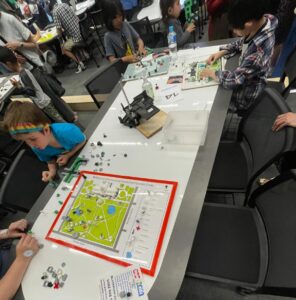
Collaboration: At the December meeting of the ANZAGG 3D printing group we discussed plans for more effective sharing of accessible 3D model files.
November 2022
Events: We had a blast sharing a collection of 3D printed materials at two Statewide Vision Resource Centre (SVRC) Science Days for students who are blind or have low vision and the SVRC Tech Expo for families and vision specialist teachers and families. We also presented our work to Victorian vision specialist teachers at an SVRC Community of Practice meeting.
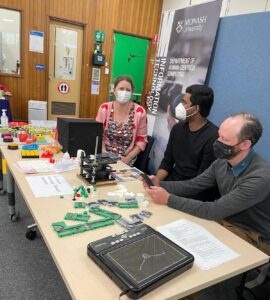
Collaboration: Abigale Stangl from the University of Washington was our special guest speaker at the ANZAGG 3D printing working group meeting. She shared some of her work on 3D printing for tactile graphics.
October 2022
Events: Kim Marriott, Matt Butler and Leona Holloway visited our project partners, NextSense, in Sydney. The trip included an in-person(!) session on 3D printing for itinerant teachers. We were also able to demonstrate our materials to touch readers and speak directly with designers of accessible 3D printed models from NextSense, the Department of Education NSW and the University of Sydney.
Matt Butler spoke about our work creating inclusive gallery experiences at a showcase of inclusion and accessibility projects from the Faculty of Information Technology at Monash University.
September 2022
Collaboration: We held our final Expert Advisory Group meeting. Our sincere thanks are extended to each and every member for their assistance in directing the project to ensure maximum benefit for the blind and low vision community. Thank you to Ramona Mandy (Blind Citizens Australia), Bruce Maguire (Vision Australia), Elizabeth Levesque and Debra Lewis (Department of Education Victoria), Sonali Marathe (Round Table on Information Access for People with Print Disabilities Inc. and NextSense), Danielle Kruger (Guide Dogs Australia), Tony Starkey (Royal Society for the Blind Adelaide), Terry Boyle (Queensland Tactual Mapping Committee) and Neil Jarvis (independent consumer).
At the monthly ANZAGG 3D printing meeting we were pleased to hear from David Harraway, an occupational therapist from Yooralla on the topic of 3D printing for the creation of assistive technologies.
August 2022
Collaboration: Ka Li from NNELS spoke at the ANZAGG 3D meeting about their tactile initiatives to provide access to tactile materials beyond educational materials. This is to make tactile graphics and models fun while fostering tactile literacy and spatial reasoning skills.
Events: We shared our 3D printed tactile maps at Monash Open Day, where we had an incredible 25,000 visitors to the Faculty of IT.
Research: We conducted touch testing of 3D printed icons for inclusive tactile maps of parks, playgrounds and shops.
July 2022
Collaboration: We welcomed Dennis Damsma from Toyota Australia as our guest speaker at the ANZAGG 3D meeting.
Guidelines: We updated the guidelines on Where to find 3D printing designs (2 new sites added) and 3D printing design software (OnShape added).
June 2022
Collaboration: Caroline Karbowski from See3D was our guest speaker for the ANZAGG 3D printing meeting this month. We also held our quarterly meeting of the Expert Advisory Committee.
May 2022
Promotion: We presented 3D printed materials for touch readers and conducted some touch testing with sighted participants at Melbourne Knowledge Week with a “come and try” collection of our materials in Prototype street. We also held a “Braille Bombing” event (using our custom designed 3D printed slates and styluses) that gained a lot of media attention, including ABC News Radio and The Age.

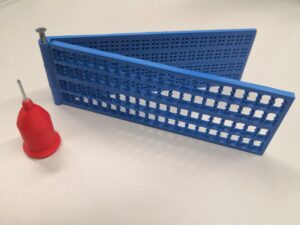
We also presented our work, with an update on progress made over the last year, at the 2022 Round Table Conference.
Research and implementation: The second “Access Elvis” session for blind and low vision visitors to the “Elvis: Direct from Graceland” exhibition was held at the Bendigo Art Gallery.
Publications: “3D Printed Street Crossings: Supporting Orientation and Mobility Training for People who are Blind or have Low Vision” by project team members Leona Holloway, Matt Butler and Kim Marriott was presented at the CHI Conference on Human Factors in Computing, where it received a Best Paper award.
April 2022
Research and implementation: We contributed to art accessibility at the first of two “Access Elvis” sessions for blind and low vision visitors to the “Elvis: Direct from Graceland” exhibition at the Bendigo Art Gallery.


Publication: We contributed to a paper on 3D printing and other technologies for touch access to ocean pools: Tactile Oceans – Enabling Inclusive Access to Ocean Pools for Blind and Low Vision Communities by Dagmar Reinhardt, Leona Holloway, Nicole Larkin and Sue Silveira, presented at the CAADRIA 2022 International Conference for The Association for Computer-Aided Architectural Design Research in Asia.
Collaboration: We discussed a range of topics at the ANZAGG 3D printing meeting.
March 2022
Education: We are conducting a survey on the use of 3D printing in education for students who are blind or have low vision. Educators and parents who have used 3D printed models with BLV students are invited to fill out this five minute survey for teachers with optional sections to provide feedback on specific models, while accessible formats producers who have produced 3D printed models are invited to fill out this 15 minute survey for producers. Your responses will assist in forming recommendations and resources to support further implementation.
Mapping: Ruth Nagassa conducted user testing with multi-level 3D printed shopping centre models.
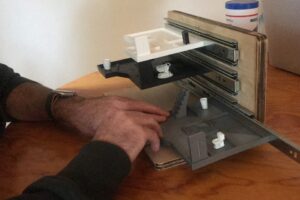
Promotion: Leona Holloway (Monash University) and Sarah Hayman (Statewide Vision Resource Centre) presented a webinar for the Community Care Services & Assistive Technology Collaborative.
Publications: “Touch Reading 3D Prints” by project team members Leona Holloway, Kate Stephens and Ramona Mandy was published in JSPEVI Journal of the South Pacific Educators in Vision Impairment, vol 14, no 1.
Collaboration: We held our quarterly meeting of the Expert Advisory Committee to help guide the project according to the needs of our partners and the accessibility community.
February 2022
Collaboration: At the ANZAGG 3D Printing meeting we heard from special guests Aukje Snijders, Ruben Brandsma and Evert Rasing on the topic of the 3D4VIP project in Europe and other related projects at Visio.
Other: The Inclusive Technologies group has moved into a brand new lab at Monash University Clayton Campus, with a fantastic maker space with the facilities and space to produce materials, conduct experiments and run inclusive technologies workshops.
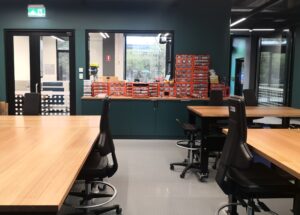
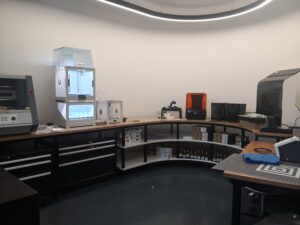
January 2022
Mapping: We released a series of materials to help teach orientation and mobility concepts for street crossings. The 3D printable files and a Word guide are available from Thingiverse at www.thingiverse.com/leonah/collections/street-crossings.

Guidelines: We made one minor update to existing guidelines for 3D printing published on the Round Table website:
- Where to find existing 3D models – added MiniWorld3D as a recommended site for detailed 3D printable models of famous landmarks and buildings
Touch testing: Touch testing is again delayed while we follow Victorian State Government advice for the higher education sector to work from home.
December 2021
Touch testing: After long delays due to COVID restrictions, we are now able to resume touch testing on site at Monash University. Please contact us if you are interested in touch testing some of our models or materials. Both blind and sighted participants are welcome, but please note that full vaccination is required to attend Monash University campus.
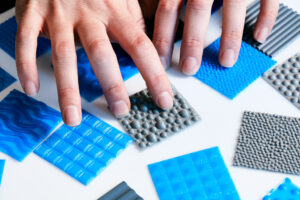
Promotion: We contributed a presentation on 3D printing for accessible art galleries at the closing conference of the Polish-Ukrainian project, “Invisible Heritage: Exchange and implementation of good practice in access to culture for persons with a visual impairment”. The English-language content is now available at https://www.youtube.com/channel/UC9o7kDfBcC5PJzH5z7KPm2w.
Collaboration: We held a quarterly meeting of the project’s Expert Advisory group, with an excellent discussion around the value of 3D models and their interpretation by touch readers.
At the December meeting of the ANZAGG 3D Printing group we discussed software solutions for converting from a print map to a 3D map, accessibility of 3D modelling software, and other methods for creating 3D models. We also made plans for 2022.
Guidelines: There have been over 1,700 visits to our guidelines on 3D printing for touch readers on the Round Table website throughout 2021. This month, we published guidelines on Other methods for creating 3D models (besides 3D printing) and made the following updates to our existing guidelines:
- 3D printing design software – added the option of add-ons such as Structure Sensor for 3D scanning
- 3D model selection, design and printing by people who are blind or have low vision – Added Slic3r as a recommended slicer to allow more complex functions such as orienting a model using a screen reader.
November 2021
Collaboration: Our special guest speaker at the ANZAGG 3D Printing group was Tony Koutsonikolas from Maple Glass Printing to talk about software solutions for a smooth finish. We also discussed other methods (not just 3D printing) for creating 3D models.
Promotion: We attended the SVRC Assistive Technology Expo, presenting on the topic of audio augmentation.
Guidelines: We made the following updates to our existing guidelines:
- Overview on 3D printing for people who are blind or have low vision – Added a list of 3D printing services and other options if you do not have access to your own printer.
- Labelling 3D prints – Added more details about basements and audio labelling devices.
- Finishing – Preparing 3D prints for touch readers – Added information about 3D printing pens as an option for adding textures, lines and contrasting colour to a 3D print after it is completed; and using 3D Gloop! for joining 3D printed parts.
October 2021
Collaboration: Our special guest speaker at the ANZAGG 3D Printing group meeting was Kathryn Penzhover from the University of Colorado to speak about the Build-A-Better-Book Project. We also discussed situations when both a 3D model and a tactile graphics are needed together.
We attended a meeting of the NASA SSERVI Equity, Diversity and Inclusion Focus Group to discuss options for making astronomy accessible via 3D models.
Promotion: Leona Holloway (Monash University) and Alicia San Martin (Guide Dogs Victoria) spoke about the project at a professional development day for the Children’s Mobility Service at Guide Dogs Victoria.
Mapping: We began design and evaluation of over 100 3D icons for use on tactile maps.
Guidelines: We updated the guidelines on Finishing with some new tips for smoothing using 3D Gloop! or a wood burning tool with a flat tip.
September 2021
Promotion: Leona Holloway (Monash University) and Alicia San Martin (Guide Dogs Victoria) spoke at the OMAA Online Symposium about the collaborative design and use of 3D printed street crossing kits for orientation and mobility specialists to use when teaching blind children about the essential concepts of street crossings.

Collaboration: We met with Aukje Snijders from the European 3D4VIP project, to discuss how we could share our findings about 3D printing for touch readers between Australia and Europe.
August 2021
Collaboration: At our August ANZAGG 3D Printing group meeting we discussed cataloguing, using a CNC machine as an alternative to 3D printing for 3D designs, converting from black and white photographs, and the need for bulk production of tactile rulers.
Guidelines: The guidelines on When to use 3D printing for touch readers were updated with new links to other sections and resources.
July 2021
Collaboration: Nicolas Bonne of the Tactile Universe project was guest speaker at the ANZAGG 3D Printing group meeting on 21 July. We also shared tips for getting a good fit for joints and cutting down printing time.
Tactile Literacy: We released the models for a tactile version of Boggle with braille and large print letter cubes and a tray. We also released the models for jumbo texture beads to help support concept development.
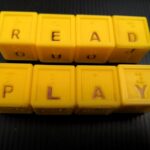

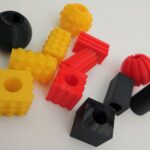
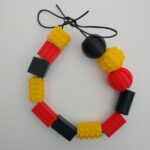
Labelling: As part of an accessible tour at the Mary Quant exhibition, Bendigo Art Gallery, we tested 3D printed models with three different labelling methods: QR code, NFC tag, and electronics with touch point and inbuilt speaker.
Guidelines: We published a newly developed Accessible Graphics Formats Decision Forest, providing guidance on which accessible formats are most suitable for any given image, along with labelling considerations. The decision forest includes 3D printed models along with existing 3D models and kits, real objects, related artefacts, and many other formats ranging from descriptions and tactile graphics to sonification and soundscapes. The decision forest is published on the Round Table website:
June 2021
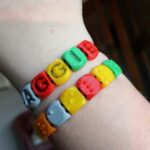 Tactile Literacy: We designed, tested and shared the models for braille and print letter beads to support braille literacy and awareness. The models can be downloaded from www.thingiverse.com/thing:4875770.
Tactile Literacy: We designed, tested and shared the models for braille and print letter beads to support braille literacy and awareness. The models can be downloaded from www.thingiverse.com/thing:4875770.
Collaboration: At the ANZAGG 3D Printing group meeting we discussed recommendations for 3D printed lines; a production workflow for creating 3D models of maps; software for modelling 3D printed textures; and we reviewed a draft decision tree for choosing accessible graphics formats. We also held a quarterly expert advisory meeting.
Guidelines: We released new guidelines on labelling 3D prints for touch readers. Thanks are extended to Ruth Nagassa for her contribution to this section and to the NSW Braille and Large Print Services for the provision of best-practice examples.
Promotion: Video recordings from the 2021 SPEVI Conference (open access) and 2021 Round Table Conference (registrants only) were released. We delivered a presentation and a workshop at both of these venues. The SPEVI videos can be accessed at:
- 3D printing for touch readers – updates and resources for educators – presentation by Leona Holloway
- 3D printing for the classroom – workshop by Leona Holloway and Nav Virdi
May 2021
Promotion: Kim Marriott presented an update on the project at the Round Table Conference, where Leona Holloway and Ruth Nagassa also ran a workshop on guidelines for 3D printing for touch readers. Related materials are available from the Round Table website.
At the CHI Conference on Human Factors in Computing Systems, we presented a paper on Technology Developments in Touch-Based Accessible Graphics. The associated AGRep tool provides an accessible collection of work in this area over the last decade, including research on 3D printing for touch readers.
Collaboration: At the May meeting of the ANZAGG 3D Printing group we were joined by Ka Li, who shared his strategies for non-visual 3D printing.
Guidelines: We updated the guidelines on 3D printing design software and Finishing and created draft guidelines on labelling 3D prints for touch readers.
April 2021
Promotion: We presented our 3D printing project work at the international Tactile Reading Conference.
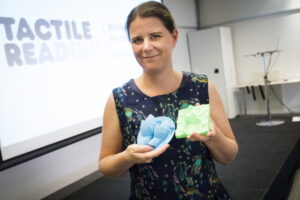
Collaboration: At the April meeting of the ANZAGG 3D Printing group we talked about accessible options for teaching astronomy, we shared out latest creations and brainstormed strategies for adhesion.
Guidelines: We published guidelines on Finishing, i.e. preparing 3D printed models for touch readers. We also updated the guidelines on 3D model selection, design and printing by people who are blind or have low vision.
March 2021
Collaboration: At the March meeting of the ANZAGG 3D Printing group we discussed which 3D models are most popular for education of students who are blind or have low vision. We also held our quarterly Expert Advisory Group meeting.
Mapping: We provided Guide Dogs Victoria with several sets of 3D printed components to help teach road crossings. They will use the materials with their clients and provide feedback. They have already requested some additional pieces and made suggestions for design refinements.
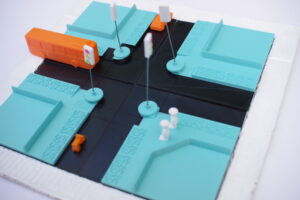
Education: We created a list of “top ten 3D prints” to help inspire first time users of 3D prints for education of students who are blind or have low vision.
Guidelines: We completed draft guidelines on finishing, i.e. preparing 3D printed models for touch readers. We also updated the guidelines on 3D model selection, design and printing by people who are blind or have low vision.
February 2021
Collaboration and Promotion: At the February meeting of the ANZAGG 3D Printing group we welcomed Ian Matty from Mountain Lakes Public Library Makerspace as guest speaker on the topic of accessible 3D prints projects for sighted learners.
Guidelines: We updated the guidelines on where to find 3D models for touch readers and began work on guidelines for finishing, i.e. preparing a 3D printed models for touch readers.
January 2021
Promotion: We contributed to JSPEVI and presented our work at the 2021 SPEVI Virtual Conference, where the whole team gave an update on the ARC Linkage Project and Leona teamed up with Navkaran Virdi from the NSW Department of Education to talk specifically about 3D printing for education.
Tactile Literacy: We continued to produce 3D printing designs to support the development of tactile literacy through games, with braille and tactile pieces for Catan.

December 2020
Collaboration and Promotion: At our December meeting of the ANZAGG working group on 3D printing for touch readers, we discussed approaches to deciding what to design/3D print for students who are blind or have low vision. Group members reported that they had been busy printing and designing in the last month, with learning materials such as 3D mountains with accompanying tactile graphics, maps of Parliament House in Canberra, and a school map that students can piece together.
Standards and Guidelines: We published new guidelines on 3D printing design software, giving recommendations about the most commonly used software by BLV educators in Australia and New Zealand. We also updated the guidelines on 3D modelling by people who are blind or have low vision.
Tactile Literacy: We published two new 3D printing designs to promote tactile literacy and inclusion. Both are games that can be played by blind and sighted people together. Scrabble tiles with print and braille can be used to play standard scrabble, speed scrabble, boggle, hangman or to complete crossword puzzles. The files can be downloaded from www.thingiverse.com/thing:4692311.
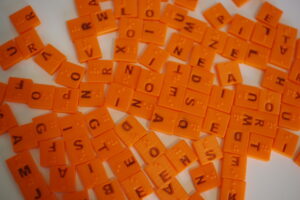
Qwirkle tiles with raised coloured shapes (and an indicator for the colours in braille) can be downloaded from www.thingiverse.com/thing:4692322.
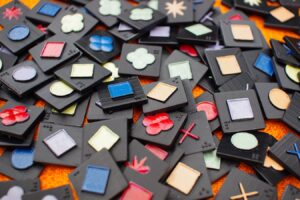
STEM Education: In support of STEM education, we designed 3D printed water cycle tiles that can be used by blind and sighted students together to discuss and demonstrate their understanding of the water cycle. The files can be downloaded from www.thingiverse.com/thing:4692170.

Our thanks are extended to the many partners, professionals and testers who worked with us in what was a difficult year for everyone. We wish you a safe and happy holiday break and look forward to future successes in the new year.
November 2020
Collaboration and Promotion: At our November meeting of the ANZAGG working group on 3D printing for touch readers, we gave a presentation on the ARC Linkage project.
Project team members from Monash University hosted a virtual exhibitor’s table (Zoom breakout room) at the 2020 SVRC Technology Expo and shared a video with a summary of our guidelines on touch reading 3D models.
A new Facebook group called “Blind and Low Vision 3D printing” was started by an Australian parent and already has 170 members worldwide. It has generated a lot of valuable discussion around the accessibility of 3D printing design software, interfaces for 3D printers and the 3D printing process.
Education: We designed and shared a 3D printed braille puzzle that can be used to support tactile literacy. It is available for free download from Thingiverse at www.thingiverse.com/thing:4670016.
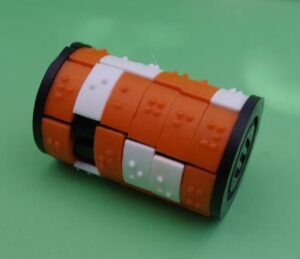

October 2020
Collaboration: At our October meeting, the ANZAGG working group for people using 3D printing for touch readers discussed what software we use for creating 3D printing designs. We also shared recommended designs for tactile rulers.
Standards and Guidelines: We published guidelines on understanding 3D prints by touch, updated the guidelines on 3D modelling by people who are blind or have low vision, and started work on guidelines on 3D modelling software.
Mapping: We continued work designing and creating 3D models to represent road crossings.
Promotion: Kate Stephens and Matt Butler presented our autoethnographic paper on a blind traveller, which included the production and use of 3D models of a cruise ship, at the ASSETS 2020 virtual conference on computers and accessibility. The paper can be downloaded from https://dl.acm.org/doi/10.1145/3373625.3417011.
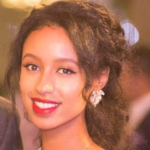 Staffing: We welcomed Ruth Nagassa to the project. Ruth is a new PhD student with Monash University’s Inclusive Technologies group. She has experience in the creation of 3D printed anatomy models and will focus on 3D printing STEM materials and labelling for touch readers.
Staffing: We welcomed Ruth Nagassa to the project. Ruth is a new PhD student with Monash University’s Inclusive Technologies group. She has experience in the creation of 3D printed anatomy models and will focus on 3D printing STEM materials and labelling for touch readers.
September 2020
Mapping: We continued work designing and creating 3D models to represent road crossings.
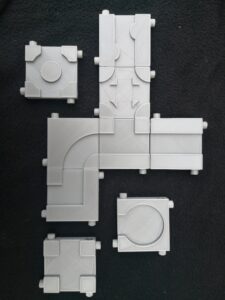
Standards and Guidelines: We began work on principles and guidelines on how to read 3D models by touch.
Collaboration: At our September meeting, the ANZAGG working group for people using 3D printing for touch readers discussed how we can support one another in developing, testing and sharing our designs.
Promotion: Leona Holloway spoke about her work on the project in an episode of the RO&Ming with Lil podcast with Deverell.
August 2020
Standards and Guidelines: We released introductory guidelines on techniques for 3D printing by people who are blind or have low vision.
Collaboration: At our August meeting, the ANZAGG working group for people using 3D printing for touch readers discussed gathering feedback from teachers using 3D prints with students who are blind or have low vision.
Mapping: We spoke with O&M instructors throughout Australia about mapping tools currently used to teach street crossings and started to design our own tools using 3D printing.
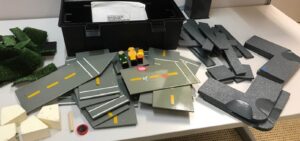
July 2020
Standards and Guidelines: We released the first of a series of guidelines on 3D printing for touch readers on the ANZAGG website – When to use 3D printing and Where to find 3D models for touch readers.
Collaboration: At our July meeting, the ANZAGG working group for people using 3D printing for accessibility heard from special guest Jim Allan, Chair of the DIAGRAM 3D working group.
Labelling: At our ANZAGG meeting we discussed options for accessible labelling of 3D prints. We will explore the tactile symbols recommended by UBIS.

June 2020
Collaboration: At our June meeting, the ANZAGG working group for people using 3D printing for accessibility discussed guidelines on when to use 3D printing.
May 2020
Collaboration: A working group for people using 3D printing for accessibility has been formed under the auspices of the Australia and New Zealand Accessible Graphics Group (ANZAGG). In May, the group held its first monthly meeting and established mechanisms to share our work. To join the group, please contact leona.holloway@monash.edu.
Standards and Guidelines: Draft sections written on “when to use 3D prints for touch readers” and “where to find 3D printing models for touch readers”.
Labelling and Interaction: Monash PhD student Samuel Reinders is exploring interactivity for people who are blind or who have low vision to independently explore 3D printed tactile models. He published a paper entitled “Hey Model” with accompanying youtube video and presented at CHI Downunder.
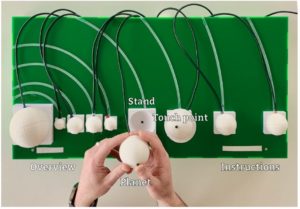
April 2020
Progress on the project was disrupted in April 2020 due to social distancing measures. We are re-designing our research and engagement activities so that they can be conducted remotely while still achieving the same outcomes.
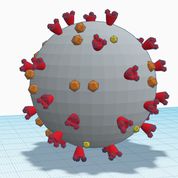
March 2020
Mapping: We enjoyed hosting a free public workshop at MPavilion in Queen Victoria Gardens, Melbourne. Participants discussed issues with accessible mapping and tried their hand at designing and testing 3D symbols for maps.

February 2020
Mapping: Continuing our work exploring multi-level maps, we commenced mapping of a cruise ship.
Labelling and Interaction: We shared a file for customising 3D printed braille labels with good quality rounded dots and braille contractions. The OpenSCAD file is available with instructions at www.thingiverse.com/thing:4167866.
January 2020
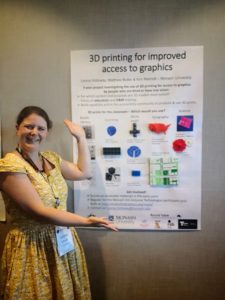 January was all about SPEVI, with the conference of the South Pacific Educators in Vision Impairment held in Adelaide. With around 200 attendees, mostly teachers in Vision Impairment, it was a great opportunity to share our work and seek involvement from experts and practitioners in the vision education sector.
January was all about SPEVI, with the conference of the South Pacific Educators in Vision Impairment held in Adelaide. With around 200 attendees, mostly teachers in Vision Impairment, it was a great opportunity to share our work and seek involvement from experts and practitioners in the vision education sector.
Leona Holloway delivered a presentation outlining our project investigating 3D printing for accessible graphics. Leona Holloway and Debra Lewis presented a hands on workshop exploring models and techniques for producing educational 3D models for vision impaired students. Danielle Kruger delivered a presentation and shared videos documenting her work with 3D printed school maps for students. We also presented a tactile poster on our work.
All materials from the SPEVI Conference will be made available on their website at www.spevi.net/conference/. Our sincere thanks are extended to SPEVI for their generosity in supporting this project.
December 2019
Administration: We held a meeting of the project’s expert advisory group, who provided excellent guidance and offers of assistance. We also held a planning session, mapping out work and timelines for 2020.
Tactile Literacy: In collaboration with accessible formats producers at the Statewide Vision Resource Centre and RIDBC, we continue to build the ANZAGG collection on Thingiverse with free 3D models for educational use.
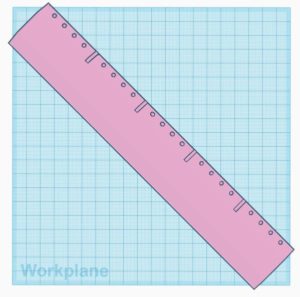
November 2019
Mapping: While the first map is in testing with Guide Dogs Victoria, we produced a second 3D printed map of a school building. This is our first exploration of how to represent multi-level buildings.
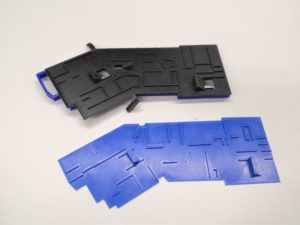
Tactile Literacy: We attended the Statewide Vision Resource Centre Tech Expo, where we presented a workshop on 3D printed materials for early learners and invited vision specialist teachers to take part in our survey at accessiblegraphics.org/2019/12/18/survey/. This survey is open to all people working with vision impaired children in prep to year 2. Your input is vital to help shape our research, guidelines and design of materials.
Guidelines: We have commenced extending our work on designing and evaluating 3D printed textures for tactual discrimination.
Promotion: Many of the models that we have identified or designed for touch readers are available for free download from the ANZAGG Thingiverse collection under the auspices of Round Table’s Australia & New Zealand Accessible Graphics Group. These materials have now been included in the meta-library of tactile graphics and 3D models by BTactile.com.
October 2019
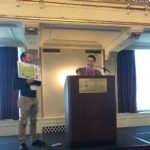 Promotion: ASSETS is the premier forum for presenting research on the design, evaluation, use, and education related to computing for people with disabilities and older adults. We attended this international conference to present a paper on 3D printing for mapping from the Melbourne International Flower and Garden Show, along with a poster on accessible formats (including 3D printing) for access to art, as explored with Bendigo Art Gallery.
Promotion: ASSETS is the premier forum for presenting research on the design, evaluation, use, and education related to computing for people with disabilities and older adults. We attended this international conference to present a paper on 3D printing for mapping from the Melbourne International Flower and Garden Show, along with a poster on accessible formats (including 3D printing) for access to art, as explored with Bendigo Art Gallery.
Promotion: As part of Diversity and Inclusion Week, SensiLab hosted a showcase of projects by Monash University’s Inclusive Technologies research group, including our work investigating 3D printing for accessibility.
September 2019
Guidelines: We continued our work on 3D printed textures, collecting additional data from people who are sighted, blind and deafblind. We are now able to make recommendations regarding the design and selection of 3D printed textures for touch readers.
Mapping: We produced 3D printed maps of a school ground and classrooms. These maps will be used by a student starting at the school in 2020 with assistance from their O&M instructor. Feedback will help inform design of further maps.

August 2019
Promotion: As part of National Science Week, we were invited to take part in an event at Parliament of Victoria with the theme “ExtraSensory”. We hosted a room in which we had activities relating to 3D printed icons for tactile maps and tactile discrimination of 3D printed textures. The event attracted over 1,000 visitors with whom we were able to speak about our research and the importance of accessibility.
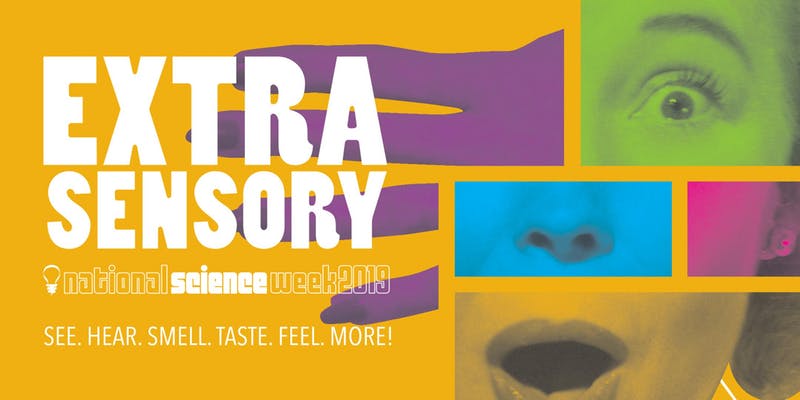
Guidelines: The “ExtraSensory” event provided a perfect opportunity to collect a large amount of data to assist in the identification of a range of 3D printed textures that are tactually distinct from one another and suitable for use on accessible maps and learning objects.
June and July 2019
Administration: The project’s expert advisory group met for the third time in June.
Collaboration and Promotion: On Thursday June 20, Matt Butler spoke about the ARC Linkage Project and 3D printing for tactile literacy at VISCON in Sydney. VISCON is a two day biennial conference for educators and related specialists in education for children who are blind or have low vision.
Tactile Literacy: A survey on tactile materials for the classroom is ready for distribution.
Mapping: We toured two schools for which 3D maps will created for use by students beginning there in 2020.
Guidelines: A selection of 50 textures were designed and printed for testing in a series of tactual discrimination tasks.
May 2019
Collaboration: The Round Table on Information Access for People with Print Disabilities Inc. is a major project partner. Their annual Round Table Conference for 2019 was held in Brisbane with the theme “The Changing Landscape for Accessible Information”. On Sunday 5 May, project Chief Investigator Matt Butler of Monash University delivered a feature presentation about the project entitled “Partnering for Progress”.
Mapping: On Monday 7 May, Leona Holloway and Matt Butler (Monash University), Tony Starkey (Royal Society for the Blind) and John-Ross Barresi (Guide Dogs Victoria) presented a hands-on workshop demonstrating a collection of 3D-printed maps of the Round Table Conference location and surrounds. Approximately 70 people were in attendance, providing feedback from their perspective as touch readers, accessible formats producers, teachers, O&M instructors and technology providers.

Guidelines: Work continues on creating a variety of textures that can be incorporated into 3D prints. At a SensiLab Open House evening, we trialled a “mystery box” activity asking people to find matching textures by touch. It was a surprisingly difficult task! This activity will be extended for more formal trials and the upcoming Extrasensory evening as part of National Science Week.
Tactile Literacy: We have started collecting and designing 3D materials to support vision impaired students in their first year of schooling. These materials include: braille swing cell; braille fidget cube; braille word cube; MAB blocks; tens frame; number lines; fraction pies; tactile coin for flipping; braille dice; tactile dominoes; tangram puzzle; 3D shapes with equal volume; tactile ruler; 3D maps of familiar places; data grid. Please let us know of any further materials you think would be useful at this level.
April 2019
Mapping: Throughout April we focused on analysing the results from the mapping study run at the Melbourne International Flower and Garden Show in March and writing a paper for an international conference submission. We were also busy preparing materials for the mapping workshop in May.
March 2019
Administration: The project’s expert advisory group met for the second time. Bruce Maguire joined the group on behalf of Vision Australia.
 Mapping: “Immerse Your Senses” was the theme of the 2019 Melbourne International Flower and Garden Show, held at the Carlton Gardens from Wednesday 27 to Sunday 31 March. We created an accessible map of the Show with 3D-printed icons, along with handheld models of the Rob Waddell Show Garden and Guide Dog Victoria’s sensory garden. Over the course of the event, we collected feedback on the maps from 10 visitors who are blind or have low vision.
Mapping: “Immerse Your Senses” was the theme of the 2019 Melbourne International Flower and Garden Show, held at the Carlton Gardens from Wednesday 27 to Sunday 31 March. We created an accessible map of the Show with 3D-printed icons, along with handheld models of the Rob Waddell Show Garden and Guide Dog Victoria’s sensory garden. Over the course of the event, we collected feedback on the maps from 10 visitors who are blind or have low vision.
February 2019

Tactile Literacy: We conducted our first school visit, discussing the materials required for touch readers in their first years of primary schooling. Suggested materials included:
- tens frame for placing counters
- MAB blocks with outward-facing lines
- braille number line
- fun “find the shape” activities
January 2019
Collaboration: Research Assistant for the project, Leona Holloway, joined the DIAGRAM working group on 3D tactile standard. The group meets fortnightly and has a focus on 3D printing for education for students with vision impairments.
December 2018
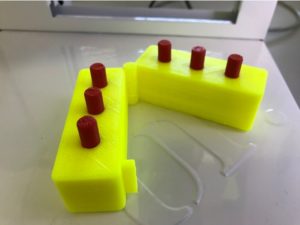 Tactile Literacy: Face-to-face brainstorming meetings were held with production and teaching staff at RIDBC and SVRC. Some of the main areas they suggested where 3D printing could assist in tactile literacy:
Tactile Literacy: Face-to-face brainstorming meetings were held with production and teaching staff at RIDBC and SVRC. Some of the main areas they suggested where 3D printing could assist in tactile literacy:
- Braille swing cell
- Braille games
- 3D shapes – solid, cross-sections and nets
- Games matching 3D objects with tactile graphics
November 2018
Mapping: Work commenced on creating TinkerCAD components for modelling street crossings.
Standards: Began modelling of 3D-printable textures.
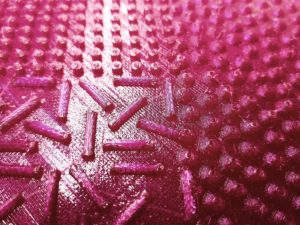
Administration: The first meeting held with the project’s expert advisory group. The project team is joined by representatives from partner organisations (the Department of Education and Training, Round Table on Information Access for People with Print Disabilities, Guide Dogs Victoria, the Royal Society for the Blind) and peak organisations from the print accessibility sector (Vision Australia, Blind Citizens Australia, Queensland Tactual Mapping Committee). Meetings will be held quarterly in March, June, September and December.
October 2018
October 2018 marked the beginning of the three-year project investigating the use of 3D printing for access to graphics by people who are blind or have low vision.
Standards: A shared document was created on Google Drive with tips and tricks for printing for accessibility. This is a working document that will be continually added to throughout the project. It is not yet ready for release but please contact leona.holloway@monash.edu if you would like access to evaluate or add to the document.